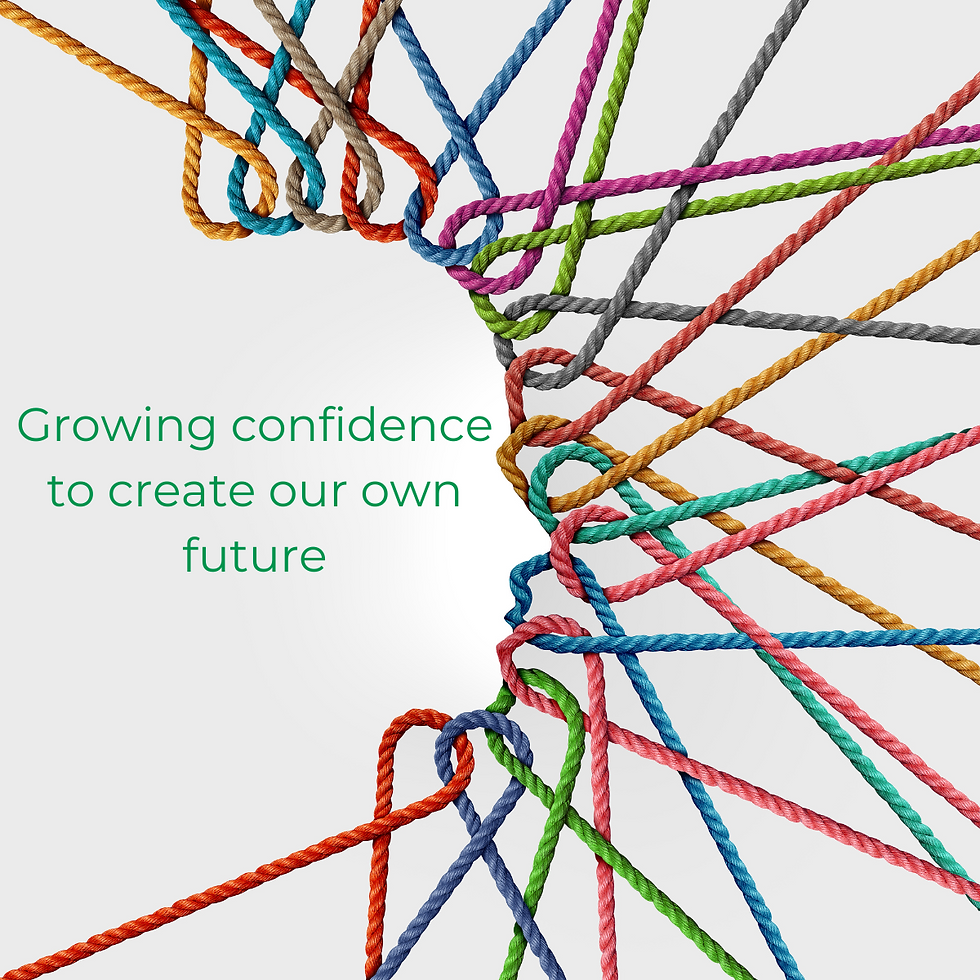What if We Approached Externally Driven Changes and Reforms as an Opportunity for Innovation and Better Client Outcomes?
- Dr Estelle McDonald

- Feb 3, 2025
- 5 min read

What might we need to put in place to achieve this?
Cultivating a Curious, Future Ready Mindset
When I’ve got a large change to tackle that I haven’t chosen, my response can at times be less than optimal. I might deny, delay, fight the obvious….and my stress levels go up. My thinking narrows and end up making suboptimal choices for the longer term.
I see this play out in client meetings and workshops again and again when tackling impending government reforms. People’s faces are tense, worried about what else will land on their plate, what will be found wanting and their bandwidth for creative thinking drops.
What if we approached our response to externally driven changes and reforms as an opportunity for us to innovate and create better outcomes for our clients?
Starting with an open perspective and reframing the issues can help us trigger new thinking and better team engagement with the change. When we focus solely on the pressing challenge ahead of us, we can find ourselves pushed towards a compliance and tick the box mentality of reform preparation, missing greater opportunities.
There are many tools that can be used to achieve this end and are outlined in well-known strategy texts (e.g. Playing to Win, Beyond Disruption: Innovate and Achieve Growth without Displacing Industries, Companies or Jobs, Blue Ocean Strategy). However, if you’re short on time and looking for an accessible way, I suggest listening to Frederik Pferdt, the first Google Innovation Evangelist’s IDEO podcast for a fresh take: https://soundcloud.com/ideo_u/how-to-take-action-and-shape-your-future-today-frederik-pferdt?utm_source=clipboard&utm_medium=text&utm_campaign=social_sharing
2. A Clear Vision of What We are Trying to Become and Achieve
Our roadmap cannot be forged without a guiding light that will enable us to challenge ourselves and reframe the principles of how we might operate. It is essential to take to imagine what we are aiming to become and achieve for our clients and organisation. The more we can articulate this, the easier we will see what we need to assess, change and build.
3. Starting from Our Clients' Needs and Testing Assumptions
Effective preparation is better served by taking a fresh, open-minded look at the services available to clients, their unmet needs, what they value most and how we might support their chosen outcomes.
Framing it as curious, non-judgemental inquiry gives us mental breathing room to take a more open-minded look at what we can improve for our clients. Doing it for myself and clients many times, it is always surprising what significant improvements we can identify through creative imagining, establishing a fact base, delving into our data and creating small experiments!
4. Identifying Opportunities and Possibilities for Innovation and/or Optimisation
How might our vision guide us to in terms of clients, unmet needs and how the organisation might evolve? Could we consider:
Addressing an unmet need in the existing market using solutions or methods not previously seen in this market?
Addressing an unmet need that is not in direct competition with others but delivers positive social outcomes? Might we work with others to create something with even greater outcomes?
Doing something radically different from your competitors and disrupting the market with better solutions for clients?
For further thought on the matter, I recommend reading W. Chan Kim and Renée A. Mauborgne’s book on “Beyond Disruption: Innovate and Achieve Growth without Displacing Industries, Companies or Jobs.” It is an insightful read that provides practical tips how one might identify innovations and the enablers to execute these in a way that is accessible to all individuals and organisations no matter their resources and size. What stood out for me, was how much more could be achieved and the extent of engagement from staff, clients and stakeholders when the innovation created a social positive for all.
5. Building the Enablers
The enablers are essentially:
The mindsets we need to create within ourselves and our teams, including resourcefulness (e.g. what can we leverage what is free and already exists, thinking ‘what could we do’, taking a moment to evaluate what would make the biggest difference).
The effective acquisition, allocation and utilisation of our internal resources (e.g. dedication of resources, regular prioritisation).
Leaning into our external knowledge networks and relationships.
We have all witnessed negative impacts on an organisation’s expertise, capabilities and stakeholder relationships of the increased volatility in key leadership positions, subject matter experts and boundary spanners that comes with sector change.
However, we often miss the potential for transformational growth on people of the changes if given the chance to stretch and grow with bold projects. Such opportunities, where I was stretched to my limit and worked collaboratively with others to create new ways of doing things, are among my fondest memories and helped me develop a network of incredible colleagues and friends! Done well and with support, these projects improve performance, assist retention and tap into yet unknown pockets of talent within the organisation.
Recognising that individuals are increasingly mobile within their careers and that this may accelerate during times of change, how might we:
Engage people proactively and positively in designing the future?
Provide employees with psychological safety, support and training to adapt to the change?
Acknowledge people are actively building their careers and collaborate with them to develop their careers and networks (see Reid Hoffman and Ben Casnocha’s books for further ideas, e.g. The Start Up of You)? Their networks could add significant value to your organisation through knowledge, opportunities and relationships.
6. Adapting our Services and Operating Model
When facing externally imposed changes to how our services are delivered (e.g. government reforms, regulations, revised government service delivery models), reviewing the fundamentals of our service proposition is key. Elements to consider include:
Target market: Who is our target market going forward
Value: What are clients trying to solve or gain with our service? Client/employee insights and feedback are valuable sources of information for this.
Difference: What are the strengths and differentiators we could leverage?
Offer: What might we offer? Where this is prescribed by government guidelines, what can and cannot be offered. What else could we offer leveraging our services, resources and networks that could add greater value to our clients?
Price: How might we ensure we price sustainably (e.g. in government tenders, open market)? Where there is fixed pricing, what are the operating model assumptions that are driving the fixed pricing and what might we need to adjust in ours?
Client journey: How might we redesign our service to create a streamlined and better client experience?
Thinking through these dimensions will enable us to:
Evaluate and experiment with underpinning assumptions, and
Identify what enablers, capabilities, training and other implementation mechanisms need to be built.
In conjunction with service redesign, it is worth reviewing the overall way the organisation works (its operating model). The way an organisation operates and its processes are inextricably linked to who it serves and what services it provides. We may find that we need to adjust how we:
Organise ourselves,
Collaborate with stakeholders,
Interact with existing and potential clients,
Make decisions,
Allocate our resources,
Shape our culture, or
Measure our performance.
Contact us to explore how we might assist you in making the most of your externally driven changes.
Dr Estelle McDonald is the Founder and Principal at Growth Seeds Consulting and specialises in growth, strategy and execution for nonprofit organisations.




